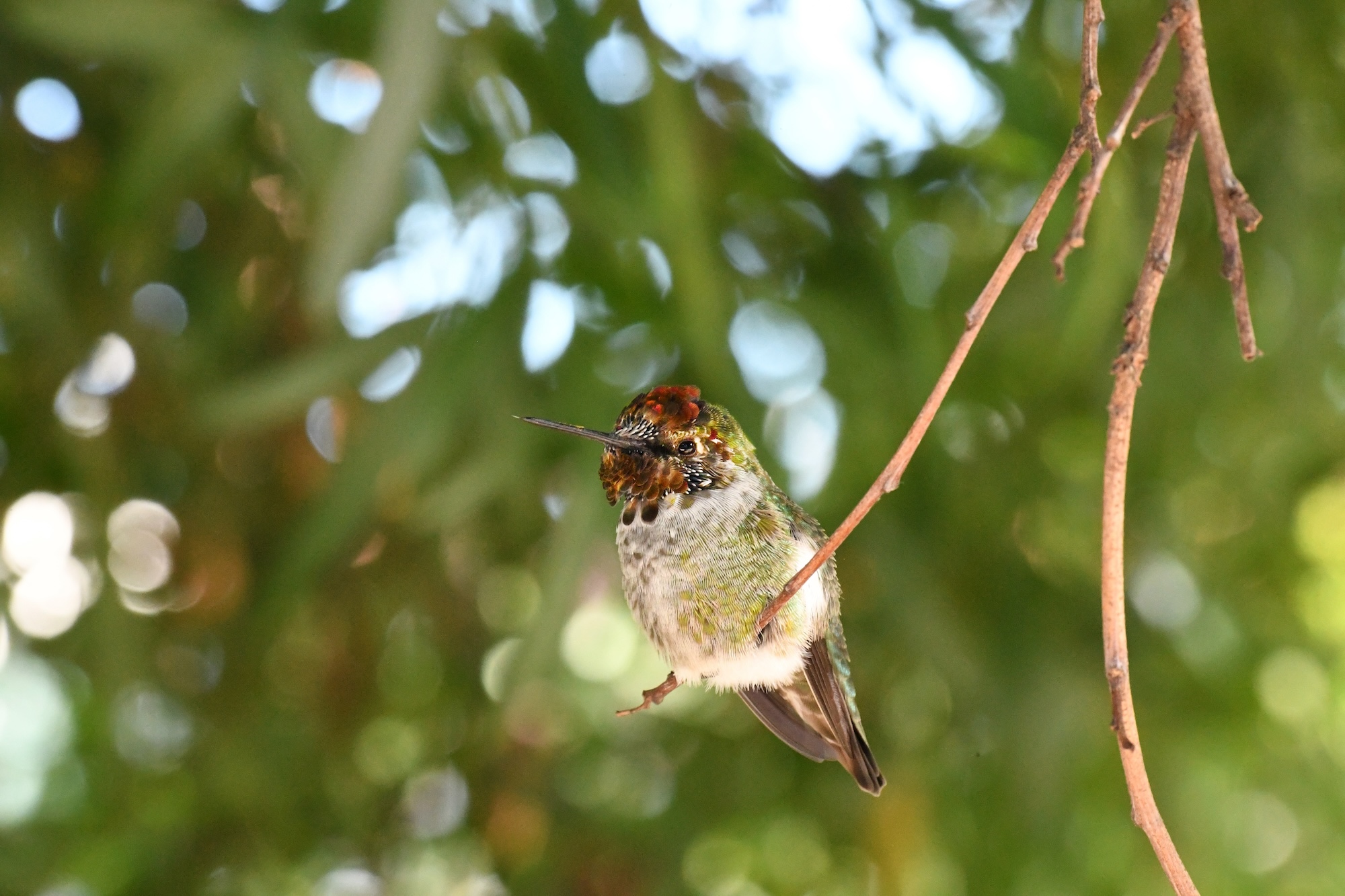Hummingbirds have feelings too: an acute sense of touch that could help them hover
May 29, 2024

May 29, 2024

New research mapping a hummingbirds’ sense of touch onto specific areas of the brain shows the little creatures are sensitive to even slight puffs of air.
The study, published today in Current Biology, could help show just how hummingbirds perform their signature hover near the flowers they feed on, as well as inform animal welfare and future touch technology for humans.
“Vision in hummingbirds has been studied extensively but virtually no work has been conducted about processing touch, and this could be a very important sense contributing to their flight,” said senior author Dr. Duncan Leitch, assistant professor at the University of California, Los Angeles, who conducted the work during his time as a professor in the UBC department of zoology. Sense of touch in mammals has been widely studied, but only in a few species of birds – until now.
“When we’re handling birds, especially in the wild with, say, an injured bird, we want to touch it but we don’t know what pressure might be painful,” said co-author Pei-Hsuan (Shelly) Wu, a UBC zoology doctoral student. “We found hummingbirds could detect even a little bit of force. Mapping these tactile thresholds can help us understand how sensitive these birds are to touch, and could be significant for animal welfare including captive birds.”
The scientists puffed air onto four hummingbirds and brushed the birds’ wings gently with cotton swabs, using tracer dyes and a micrometer thick electrode to measure their brains’ responses to these different touches. They found hummingbirds create a 3D body map when neurons in two specific spots of the forebrain fire in response to these stimuli. While touch in humans causes neurons over the surface of our brain to light up, like a sheet, a hummingbird’s brain is like an orange, with progressive interior sections lighting up when different parts of the body are touched.
Nerve cells in particular feathers on the leading edge of the hummingbirds’ wings, the skin of their legs and areas of their bills, face and heads, determined air pressure intensity, which, along with factors including proximity to an object, helps the animal gauge its orientation relative to an object. “We found disproportionately large areas of the brain responding to touch were devoted to the wings and the feet, and even specific areas of the wing that were poised to detect different kinds of gusts and drafts,” said Dr. Leitch. “This could be hinting at the ways they’re using their sense of touch as they’re hovering and balancing to feed from a flower. And when they sleep, they lock their feet onto a branch. Perhaps they need to feel branches when they’re asleep to remain secure?”
In hummingbirds, some of these receptive fields, especially on the bill, face and head, were very small, meaning they could sense the lightest touch.
The researchers also studied zebra finches and found they had the same but larger receptive fields, suggesting these regions in finches are not quite as sensitive and probably of greater relevance to hummingbirds that rely on constant, steady precision flight.
Learning more about how diverse animals map touch across their body could lead to advances in technologies that use sensors to move about or perform a task, such as prosthetic limbs or autonomous devices. “To see all the different ways a brain might wire a sense of touch is interesting,” said Dr. Leitch. “In time, this could lead to creative technology to access the touch circuits of the brain for someone who has suffered a stroke or has had a brain injury.
We honour xwməθkwəy̓ əm (Musqueam) on whose ancestral, unceded territory UBC Vancouver is situated. UBC Science is committed to building meaningful relationships with Indigenous peoples so we can advance Reconciliation and ensure traditional ways of knowing enrich our teaching and research.
Learn more: Musqueam First Nation